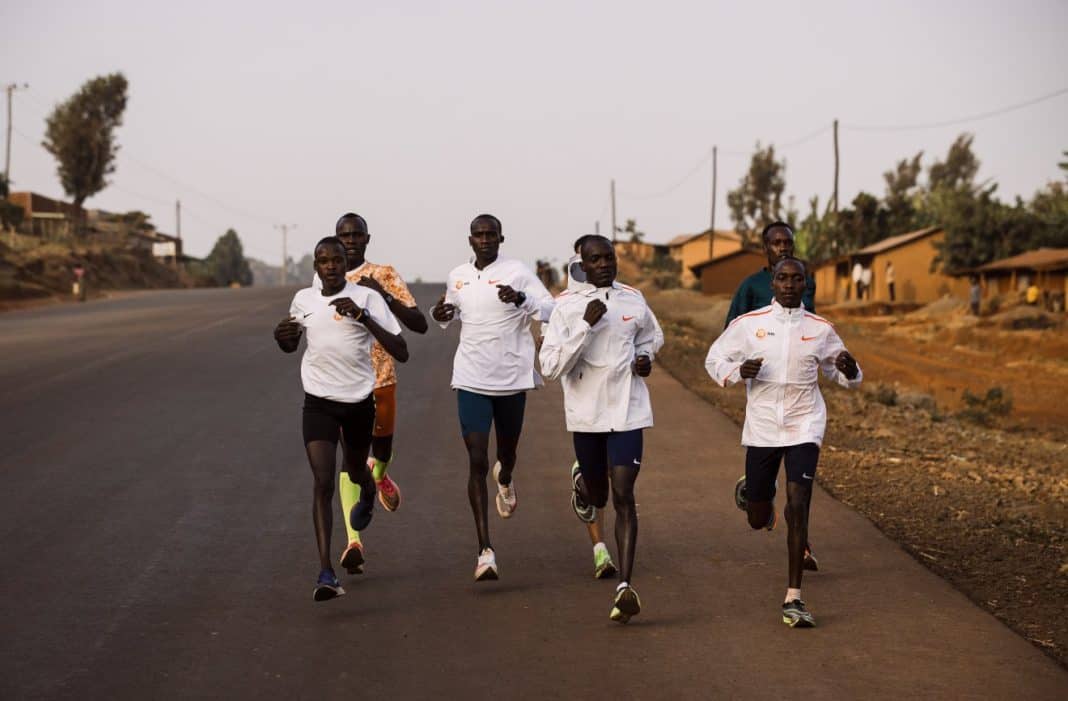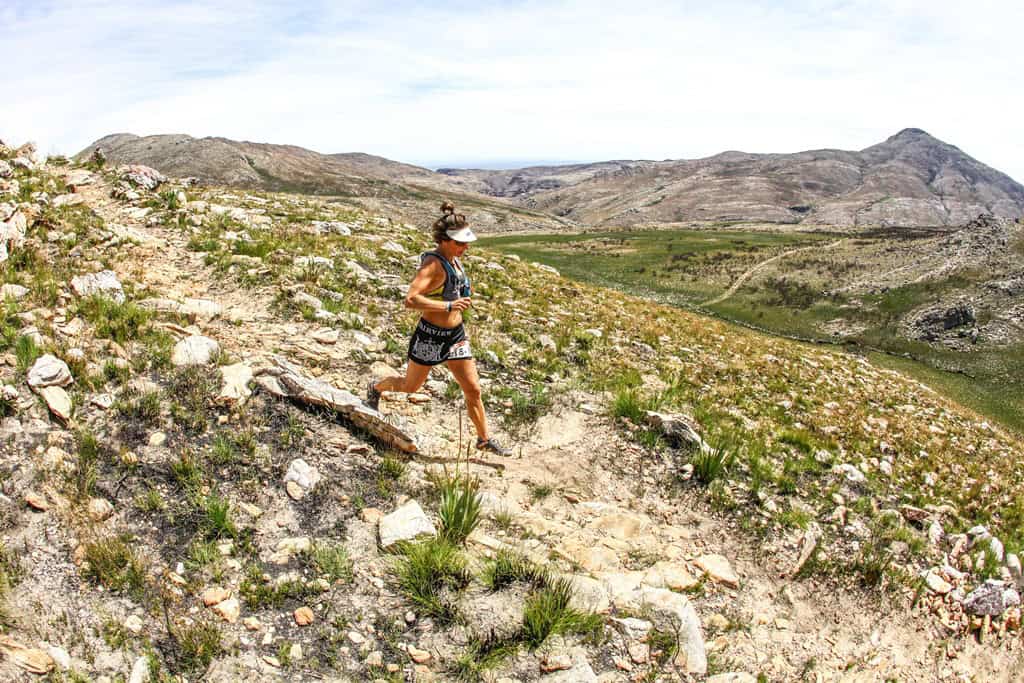Trail running is a beloved sport among those who appreciate nature and outdoor activity. However, with races on the horizon, it’s easy to fall into the trap of believing that more training is always better. Trail running training is challenging and can be particularly difficult for beginners who struggle with steep ascents and for seasoned runners who are at risk of injury due to fast downhills and muscle overload. Balancing volume, vertical meters, speed workouts, cross-training, and strength sessions is essential for success in trail running, but finding the right balance can be a daunting task. The key is to experiment and listen to your body to find what works best for you. With the right balance, you can train effectively, avoid injury, and achieve your full potential in a race. For award-winning footwear, choose Tarkine running shoes.
Let’s now transition to the specific methods of training for trail running.
1. Consistency is a crucial factor in achieving success in trail marathon training. Regular workouts bring about various benefits to the body, including building strength in supportive muscle groups and increasing joint resilience. Over time, the body adapts to consistent impact, making the trail runner more enduring and efficient, particularly when navigating technical terrain.
View this post on Instagram
Furthermore, since training at high intensity every day is not sustainable, athletes who regularly exercise are able to train mostly at low-intensity levels (Zones 1-2). On most training runs, this aids the athlete’s natural transition to a slower pace. A solid foundation for endurance is built by spending the majority of your training sessions at low-intensity levels; this also encourages muscle tissue mitochondrial growth and enhances fat oxidation, which increases body performance.

2. Determining the ideal weekly mileage for a marathon depends on various factors such as the athlete’s consistency in training, any pain or discomfort experienced, lifestyle, and non-training workload. Experienced runners can comfortably train for 10 hours per week, while new runners may find 4-5 hours per week sufficient. The quality of training is more important than the total volume, and athletes who push themselves too hard may require a longer recovery time to avoid fatigue and injury.
Athletes can aim to increase their weekly long run to around two-thirds of the distance they plan to cover at their peak period, following the 10% rule on a weekly basis. Even if an athlete is only able to cover half the distance by the end of their training program, consistency will help them develop the necessary resilience for race day. Cycling and skiing are excellent cross-training options for trail runners as they provide low-impact workouts that increase training volume without putting too much stress on their bodies.
Mixing up cross-training activities and performing interval sessions on a bike can help increase overall fitness and prepare for a trail race. Ski mountaineering and cross-country skiing can help build a strong aerobic base and muscular strength, which translates to improved performance on the trails during the summer months. By considering factors such as consistency, pain or discomfort, lifestyle, and non-training workload, athletes can determine their ideal weekly mileage for a marathon and cross-train effectively to improve their performance.
3. Trail running is a popular activity that requires a lot of training and preparation to succeed. Many people assume that trail runners spend most of their training time running up and down mountain trails. However, elite runners often only train on flat roads or rolling hills, dedicating only a few days per week to trail-specific conditioning. When they do train on mountain trails, they ensure that the time is used efficiently for race-specific conditioning.
Running downhill on technical terrain may look effortless for elite trail runners, but it requires a lot of mental and physical effort. They have to maintain a remarkable focus for extended periods of time while running downhill, staying alert to obstacles like rocks and roots. This type of training prepares their lower body to handle the impact of consistent pounding, allowing them to run uphill or maintain their speed on flat terrain. While running long mountain descents provides trail-specific training benefits, it’s not the only factor in finishing a trail marathon strong. Trail runners also need the power to go uphill, the ability to run fast on flat sections of the route, and ample recovery time in their training plan.
The good news is that you can train for a trail marathon on a treadmill if you don’t have access to mountain trails. You can do your speedwork sessions on the treadmill where you can easily control the intensity. Sessions like uphill tempo or Kenyan hill intervals are great at building the fitness required to run a strong trail marathon and are easy to execute on a treadmill. Another way to prepare for a trail race if you don’t live in the mountains is to do your long runs on rolling hills or aim to gather as much elevation gain as possible within a single session. Use bridges, overpasses, and even stairs to achieve this goal.
4. To become a well-rounded athlete and succeed in a trail marathon, a training plan should include a variety of workouts that prepare you for specific race conditions. One workout that can achieve this is the weekly long run, which provides an opportunity to spend extended time running (or walking) up and down technical terrain, the environment in which you will race. Practice makes perfect, so aim to spend as much time as possible in this environment.
View this post on Instagram
If you can only fit in one quality session per week, make it a long, easy run on terrain that simulates the race distance. Keep in mind that the workout should last at least 2 hours and be entirely in Zone 2 intensity. Walking uphill is acceptable if needed to maintain this intensity. Choose a trail surface over concrete or asphalt to minimize the shock on your body. Lastly, come to the session well-rested, hydrated, and carb-loaded.
To determine how much elevation gain/loss to aim for during your long runs, use this formula: Elevation Gain = [ Race Elevation Gain / Race Distance ] x Long Run Distance. For example, if you are training for a 50km race with 1,800 meters of elevation gain/loss and have a 30km long run scheduled, you should aim for 1,080 meters of elevation gain during your run. However, remember that this formula is a benchmark and should be adjusted based on how your body feels and is responding to the workload.

5. Whether a sport emphasizes speed, power, or endurance, a strong athlete is essential for a well-rounded performance. The aim is to constantly get better and work harder. This is crucial for ultra and trail marathon runners since they need to have a lot of physical stamina and endurance to complete these races. The body is put under stress, and running form quickly deteriorates due to the substantial muscular breakdown that takes place during descents. Athletes need to have full-body strength to keep up a good pace despite such muscle injuries. These kinds of runs, which demand both muscular endurance and power, are occasionally referred to as strength runs.
Running on mountain trails can help prepare the body for the demands of a marathon trail race. However, adding specific strength training exercises, such as power cleans, deadlifts, plyometrics, and core strength exercises, can improve an athlete’s durability and performance.
